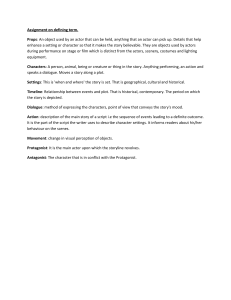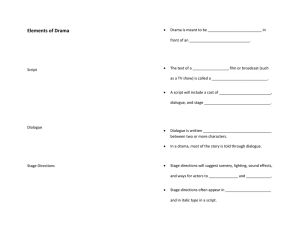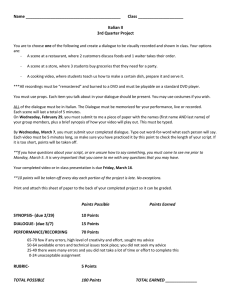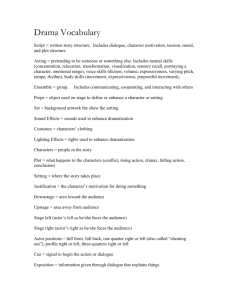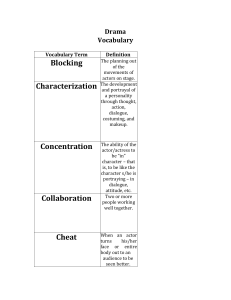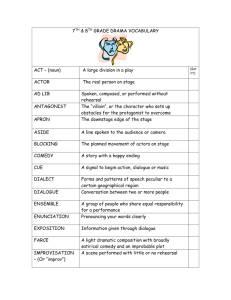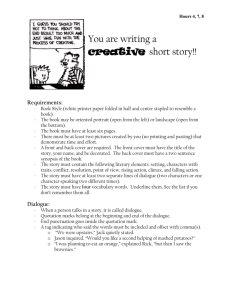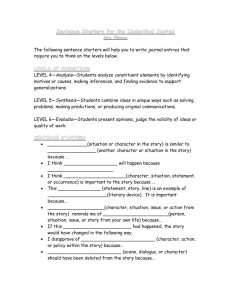Writing a Play: Tips and Steps for Beginners
advertisement
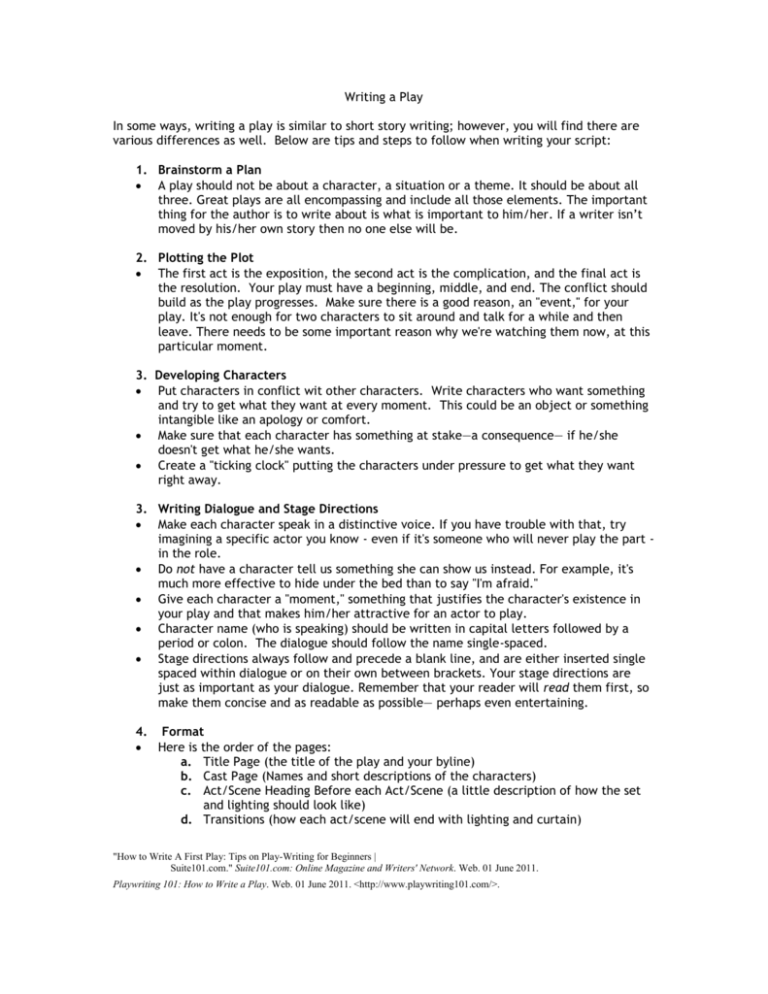
Writing a Play In some ways, writing a play is similar to short story writing; however, you will find there are various differences as well. Below are tips and steps to follow when writing your script: 1. Brainstorm a Plan A play should not be about a character, a situation or a theme. It should be about all three. Great plays are all encompassing and include all those elements. The important thing for the author is to write about is what is important to him/her. If a writer isn’t moved by his/her own story then no one else will be. 2. Plotting the Plot The first act is the exposition, the second act is the complication, and the final act is the resolution. Your play must have a beginning, middle, and end. The conflict should build as the play progresses. Make sure there is a good reason, an "event," for your play. It's not enough for two characters to sit around and talk for a while and then leave. There needs to be some important reason why we're watching them now, at this particular moment. 3. Developing Characters Put characters in conflict wit other characters. Write characters who want something and try to get what they want at every moment. This could be an object or something intangible like an apology or comfort. Make sure that each character has something at stake—a consequence— if he/she doesn't get what he/she wants. Create a "ticking clock" putting the characters under pressure to get what they want right away. 3. Writing Dialogue and Stage Directions Make each character speak in a distinctive voice. If you have trouble with that, try imagining a specific actor you know - even if it's someone who will never play the part in the role. Do not have a character tell us something she can show us instead. For example, it's much more effective to hide under the bed than to say "I'm afraid." Give each character a "moment," something that justifies the character's existence in your play and that makes him/her attractive for an actor to play. Character name (who is speaking) should be written in capital letters followed by a period or colon. The dialogue should follow the name single-spaced. Stage directions always follow and precede a blank line, and are either inserted single spaced within dialogue or on their own between brackets. Your stage directions are just as important as your dialogue. Remember that your reader will read them first, so make them concise and as readable as possible— perhaps even entertaining. 4. Format Here is the order of the pages: a. Title Page (the title of the play and your byline) b. Cast Page (Names and short descriptions of the characters) c. Act/Scene Heading Before each Act/Scene (a little description of how the set and lighting should look like) d. Transitions (how each act/scene will end with lighting and curtain) "How to Write A First Play: Tips on Play-Writing for Beginners | Suite101.com." Suite101.com: Online Magazine and Writers' Network. Web. 01 June 2011. Playwriting 101: How to Write a Play. Web. 01 June 2011. <http://www.playwriting101.com/>. 4 – commendable Organization Content and Characters Story is organized well with a clear beginning, middle and end; clearly communicates character, setting, objective and problem. The plot is well-developed. The dialogue and stage directions are clear and well written. They depict the story with clarity and help the reader to understand the plot better. The characters are well-developed through dialogue and stage directions. Script Format The script follows the format mentioned above. Grammar and Spelling There are no errors present.
